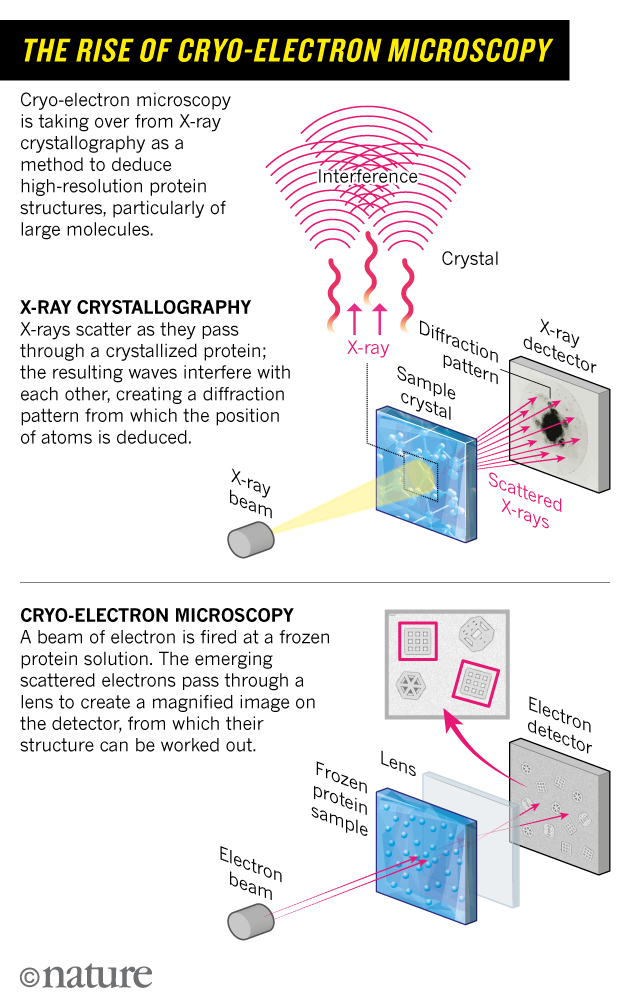Joachim Frank, Richard Henderson, Jacques Dubochet have claimed this year’s Nobel prize in chemistry taking biochemistry and medicine to a new era. The trio earned the prize for cryo-electron microscopy which is an imaging technique that allows researchers to see proteins and other large bio molecules with atomic precision. Knowing where all the pockets are in molecules helps chemists to get drugs to fit into them which makes imaging techniques vital to understand in order to treat diseases. However, researchers have had really powerful tools for imaging bio molecules for a while. Specifically, X-ray crystallography and nuclear magnetic resonance spectroscopy.
So why this one is so important is because the most decorative methods have short comings. NMR spectroscopy works best for small bio molecules – which is a drag if you want know what a virus looks like for example and if you want to use X-ray crystallography the bio-molecules you are interested in has to crystallize which not all bio-molecules do. Cryo-electron microscopy gets around these problems without sacrificing resolution. Generally speaking, electron microscopy, uses an electron beam rather than light to magnify samples to atomic resolution. But plain old EM isn’t optimized for living things and their molecules. Hitting bio molecules with an electron beam which can damage or destroy them. And electron microscopes work in vacuum which can also damage or destroy bio molecules. Today we are seeing virus and proteins and other structures like never before thanks to cryo-EM.

Cryo-electron microscopy of proteins has advanced from the low resolution image on the left to the detailed image on the right. Attribution: National Institutes of Health
Understanding how Cryo – em overcomes this challenge relies on the fact that the proteins stay in a very thin layer of liquid nitrogen and then they are frozen. The thin layer of nitrogen that they are frozen in allows them to be protected from the beam of electrons that hit them and hence they are not damaged.
Although freezing the samples protect them an electron microscope, ice crystals actually interfere with imaging. In 1982, Jacques Dubochet and his team found they could vitrify water by adding ethane that had been chilled by liquid nitrogen. Vitrify water is a glass like structure and randomly ordered rather than crystal like and hence it doesn’t interfere with imaging. Another obstacle for Cryo-em was image processing power. Early stages of the technology resulted in fuzzy images of proteins and averaged to a whole protein. In the coming years, computers get better and researchers get better in using the technology.
Presently there is an avalanche in Cryo em technology leading to sharper and better images.

Comparison of X-ray Crystallography to Cryo-Electron Microscopy Attribution: Nature
We talked about biology, medicine and a little bit of physics, you must be thinking how does this all fit in with chemistry. Allison Campbell, the president American chemical society states: “To me this is all about chemistry because this enables us as scientists to look at molecules and the arrangement of atoms in molecules and the resulting structure. And that’s all about chemistry”. I believe the Nobel prize has mostly to do with biochemistry and less about chemistry. Although, the imaging technique can be used to design new targeted drugs for certain proteins it is still mostly a biological advancement rather than a chemical advancement. Maybe a chemistry advancement will win a prize on grounds of biology in the future. Till then we can enjoy crisp images that were only part of a fantasy decades ago.
Garvit Bhatt
